Best Tools For Cooking Seafood
People often think that you require elaborate seafood tools to prepare seafood at home. You actually don’t. Chances are that you already have all of the kitchen utensils, cookware, and tools you need in your home for putting together a scrumptious seafood meal. Nevertheless, we do have some seafood tools that make preparing seafood at home simple and, as seafood geeks, we fancy a helpful kitchen tool.
So, while you might have knives, and kitchen utensils in your kitchen to get by, the right seafood specialty tool creates both efficiency and quality in the end product.
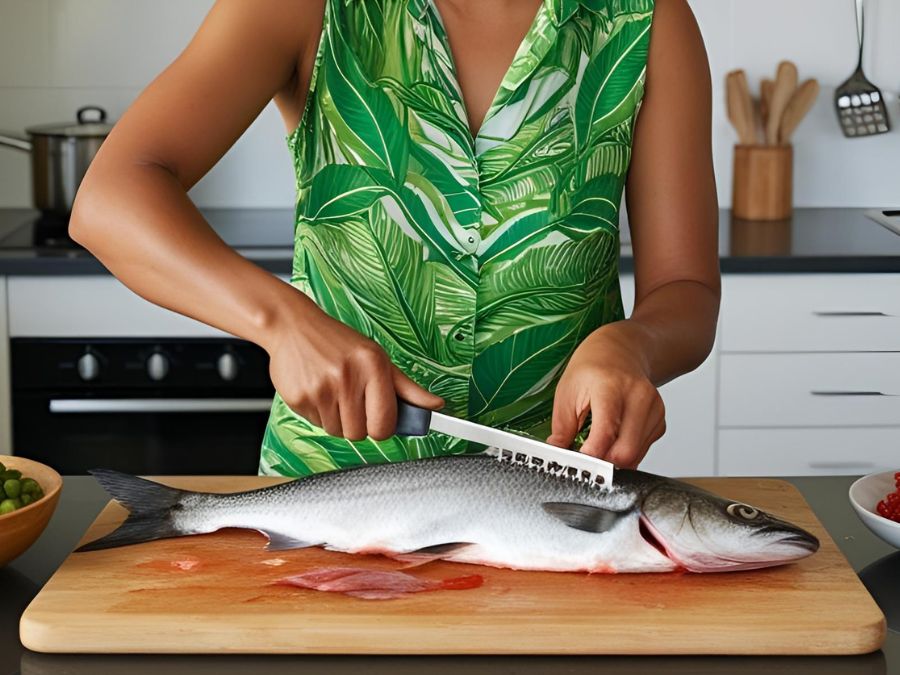
Fish Scaler
A fish scaler is not as essential as a filet knife, but since it’s first in the process of preparing a whole fish, it’s top of the list of must-haves. If you’re cooking a whole fish or a filet with skin on, you’ll want to get rid of the scales; a mouth full of them could ruin a dish.
Scaling a fish can be messy; scales will fly everywhere. We recommend doing it outside if possible, or in a trash bag if you’re doing it inside.
There are many tools that you can use to scale your fish. The back of your knife is an easy tool that you should already have on hand. A spoon is another great option.
However, our go-to tool is a fish scaler with rough, jagged edges that you run over the fish’s skin to scrape off the scales. It just seems to grip the scales a little better and work more efficiently. Since scaling a fish is not high on our list of favorite tasks, everything that accelerates the process is a win-win for us.
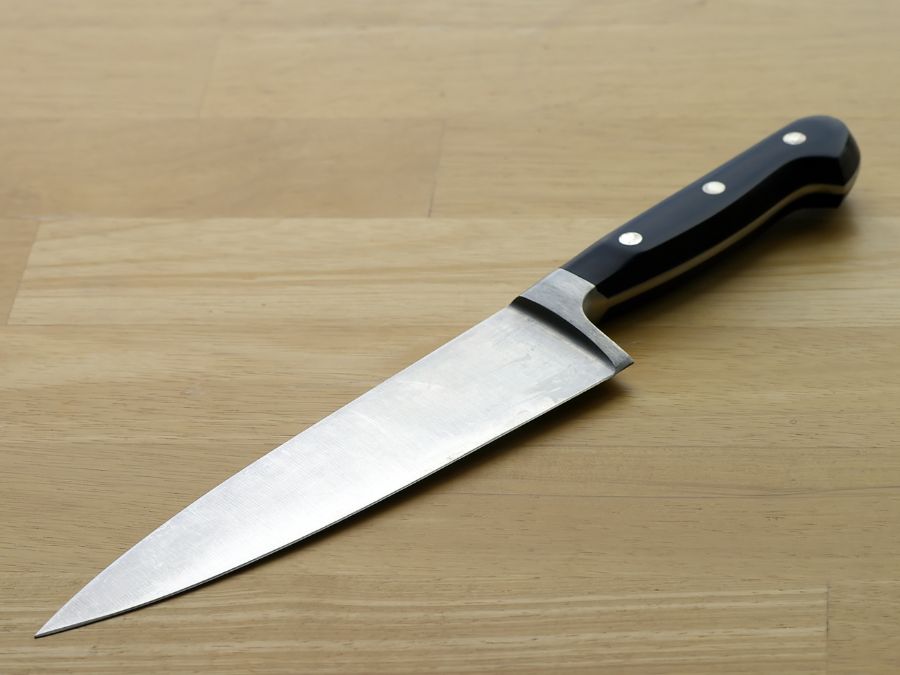
A Sharp Knife
This is easily one of the most important tools you can have in your kitchen (whether preparing seafood or not). There are many different types of knives and primarily it comes down to what you are using the knife for and your personal preference to decide which knife is right for you. The most important thing is that the knife is sharp. If you want to keep your fish knives (and all the rest of your knives) in the best possible condition, invest in a proper knife sharpening tool. Using a blunt knife to prepare fish and seafood not only damages the delicate flesh of the fish, but could also lead to more cuts and injuries while you’re cutting.
Below are a few different types of knives that are helpful when preparing seafood, especially for cutting fish. You do not need every type of knife (though maybe knife mavens would
disagree), some can overlap uses.
Filet Knife: Probably one of the most used knives for fileting a fish is the fittingly named filet knife. They are usually very thin and pliable, and sometimes are curved. They work well for detaching the skin from a filet and getting close to the bones when fileting. Your filet knife doesn’t have to be pricey or showy as long as you keep it sharp. You can pick up very pocketbook-friendly knives at bait and tackle shops or fishing supply stores.
Boning Knife: Boning knives, while thinner than most kitchen knives, are not as thin as a filet knife blade and are not always pliable (though some are). They tend to be straight (there are exceptions). Boning and filet knives are used to cut around bones, not typically through them. They are very useful for fileting and removing skin.
Deba: A Deba is a Japanese style knife used to cut fish or meat. The Deba is heftier than the filet or boning knife and is sharp and thin at the front and a bit thicker towards the handle. It is multifaceted and can be used to filet but also works particularly well at cutting through the bones of the fish such as to remove the head or cut through the ribs (do this with the thicker part of the knife).
Chef’s Knife: A chef’s knife is a versatile knife. It is designed to efficiently execute many different kitchen tasks, such as chopping vegetables, or slicing meat, rather than being over the top at any one function. Chef knives come in various sizes. We recommend when fileting use a knife that feels comfortable and gives you a feeling of control.
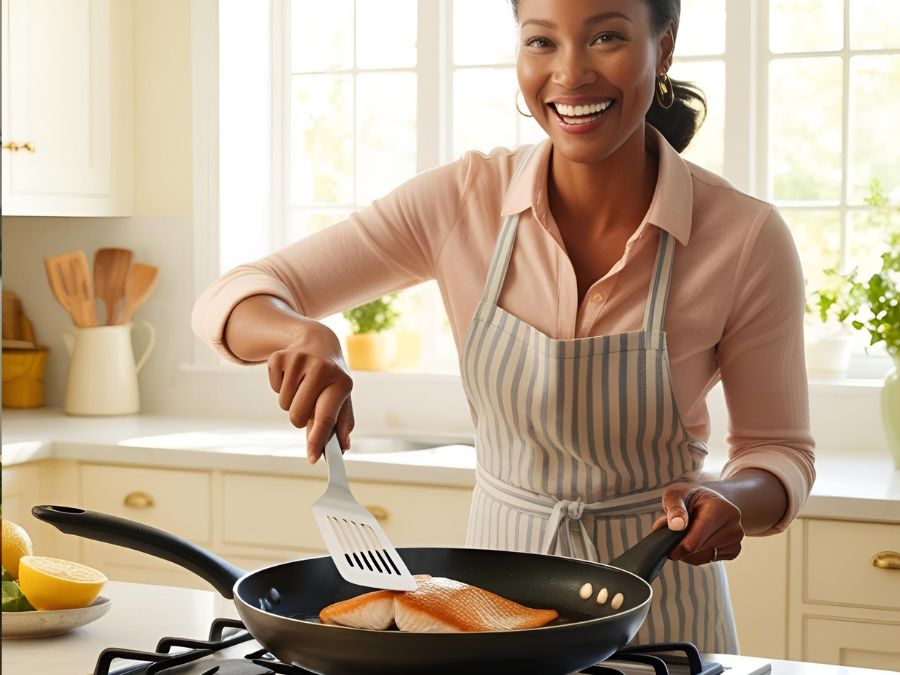
A Fish Spatula (aka Fish Turner)
Your usual spatula is not designed to turn fish. Which is why when you try, you probably make a mess of your delicious filets.
A proper fish spatula or fish turner is made for fish. The length of a fish spatula supports the entirety of the filet so it doesn’t break when you turn it in the pan. Most have some flex for more dexterity and are slotted to reduce weight and easily move through hot oil or sauce.
If it’s tender flakiness you’re going for, keeping the filet intact maximizes moisture in the fish to prevent it from drying out, so a fish spatula is key. There is something special about serving a whole, intact filet to your friends and family.
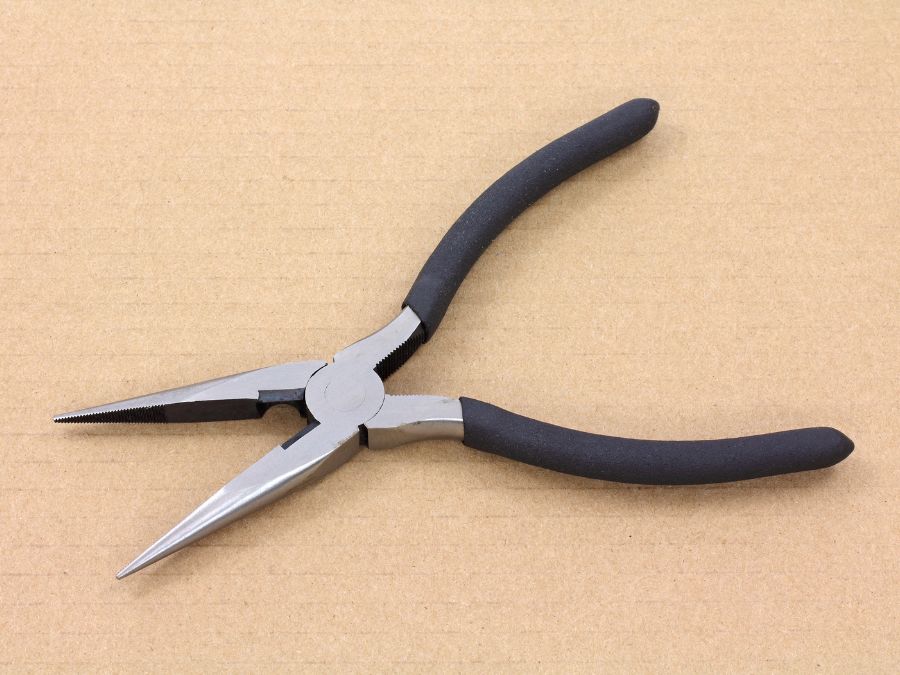
Small Needle-Nose Pliers
These are necessary to prepare many types of small boned fish like salmon and trout. The bones of these fish are so small that a filet knife will slice right through them. The filets of these fish will contain a number of small pin bones that can frustrate you at the dinner table. The easiest way to get these bones out (while doing minimal damage to your fish) is to use a small pair of pliers.
Run your fingers over the uncooked filet and feel the line of pin bones between the flakes of flesh. Hold the filet down, grab the tip of the bone with the pliers, and pull the bone from the meat. Sometimes a quick jerk will help the stubborn ones.
Don’t rely on your toolbox for this, which can be toxic and certainly will not match the flavor profile you’re going for. Invest in a small pair to keep exclusively in your kitchen.

Seafood Scissors
You may already own kitchen scissors for snipping herbs or cutting poultry pieces, but seafood scissors are specially crafted with curved blades that slice through tough shells to free shrimp, crab, and lobster intact (whole pieces means your recipes look a lot prettier). Many seafood scissors have an added cracker feature, useful for cracking crab legs and lobster claws.
Seafood scissors can also be helpful when dealing with a whole fish. Use them to trim the fins (so you don’t get impaled), cut out the gills, cut through thin bones such as around the ribs when fileting, or open up the belly to remove the guts without slicing open the stomach.
Lobster Cracker and Seafood Pick
Add a sturdy lobster cracker to your collection of seafood tools. It makes getting to crab and lobster meat no problem.
Seafood picks also make it easy to dig out the sweet meat. There is a spoon end of seafood picks that can scoop the delectable meats out of the tiniest of crevices.
If you don’t have picks you can use a small fork, and nut crackers or your seafood scissors are a great alternative to the lobster crackers.

Oyster Knife
If you like oysters, you should have an oyster knife. Oysters are the perfect, briny appetizer to whet your appetite for the main seafood course. Oysters knives are perfectly designed to pop the shell open safely with minimal effort.
If you don’t have an oyster knife do not use a sharp knife. One slip and you would be headed to the emergency room for stitches. In this case, you’re better off using a butter knife or a flathead screwdriver.
Prying open a tight oyster, clam or mussel is best accomplished with the right knife, as the angled steel blade and sharp point can both open the mollusk and loosen the briny treat inside
Protect your hands with shucking gloves to secure the shellfish (flat side up) or a kitchen towel. Insert the tip of the knife into the back hinge and firmly wiggle it until it starts to release. Rotate the knife to open the shell and move it to the side to open it fully. Use the blade to separate the muscle from the top shell, then take off this piece and scrape along the bottom shell to free the oyster.
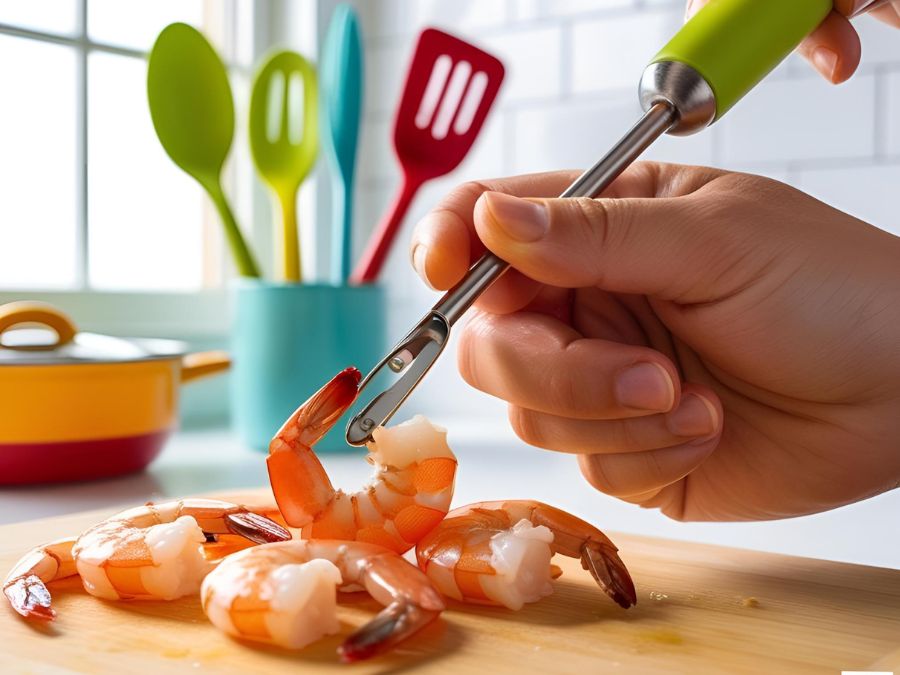
Shrimp Deveiner and Cleaner
Shelling and deveining shrimp is a slippery business, which is why seafood tools that carry out both tasks are so handy. Even with wet shrimp you can get a solid grip with a shrimp deveiner to remove both the shell and the gritty dark vein (the intestinal tract).
For cleaned and deveined shrimp, place the tool just under the back of the shrimp shell by the head. Gently rock the tool forward following the curve of the body to slice open the shell. Next,
remove the shell pieces and use the tip of the blade to lift out the exposed vein.
Seafood Steamer
Steaming is one of the best ways to prepare all kinds of seafood. It’s quick, easy, and healthy since you’re not adding too much fat. Even better, it keeps the seafood moist and tender, so it’s definitely one of the most important pieces of seafood equipment you will ever own.
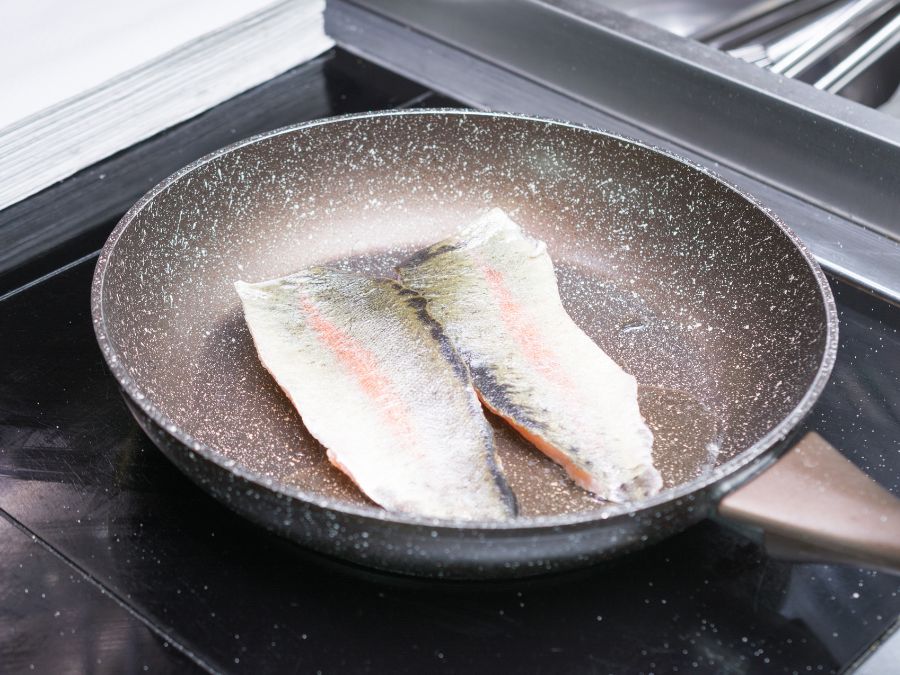
Fish Skillet
Yes, there are skillets that are made just for fish. Add one of these to your kitchen accessories for perfectly crisp fish skin. They’re also designed to release fish easily, so you won’t ever have to deal with fish that’s stuck to the pan. They do this with a clever dimpled surface, that’s unique to this kind of pan. You can use a regular skillet for fish, but you might still struggle with this problem, so it can be worth upgrading if you cook fish often.
Choose a skillet that is large enough to cook enough fish for your family or guests without crowding the pan. Look for a heavy base, which is less likely to warp and will distribute heat more evenly.
Large Cutting Board
You should always cut different food on different boards. We recommend one at least 12”x18” with a groove around the edges to prevent fluids from escaping. The reason it needs to be big is so that you can comfortably maneuver a whole fish without it sliding off the edge.
Cutting boards come in different materials. The most popular are plastic and wood. For working with raw fish we prefer the plastic because it is durable, inexpensive, easy to clean (no one wants a fishy smelling board in their home), and generally won’t absorb bacteria as easily as wood.
Seafood Mallet
Crabs and other crustaceans are delicious, but notoriously difficult to prepare. Add a seafood mallet to your seafood tools and equipment for easier preparation of all kinds of shellfish. The best part: the flat ends of the mallet can crush tough exteriors without mashing the tender meat inside.
Fold the crab or lobster inside a kitchen towel to corral any mess. Give a few good whacks with the mallet, and eureka!
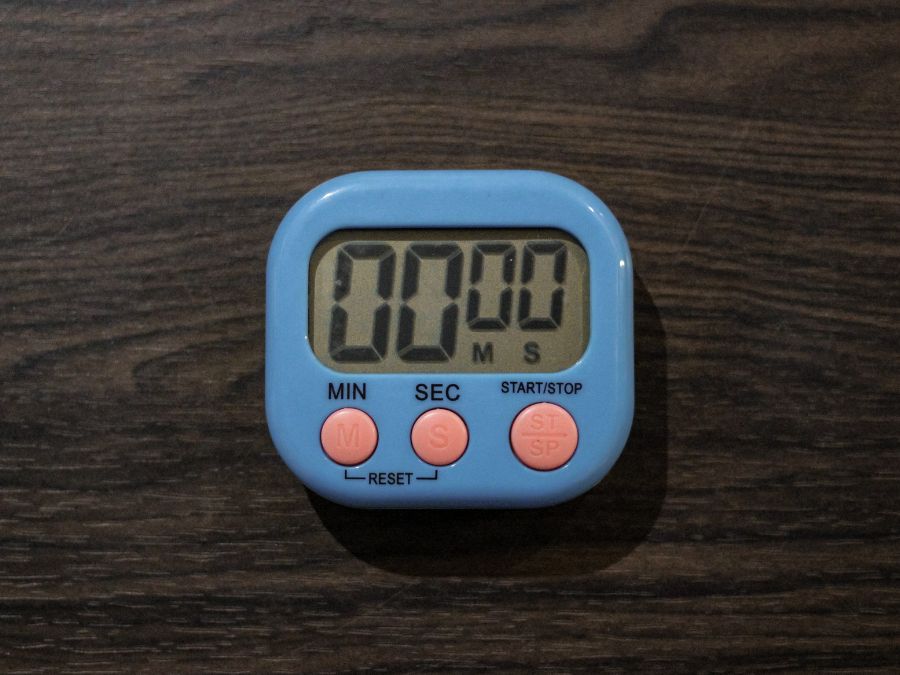
Kitchen Timer
This is not, strictly speaking, specifically a fish kitchen accessory. But it is one that will improve your seafood and fish cooking. Most seafood is very delicate and overcooking is the worst thing you can do. So, get a good kitchen timer and be sure to set it according to your recipe when you cook fish or seafood. It can transform your results.
Seafood Tools Make All the Difference
There’s no denying that you can cook anything, including fish and seafood, without too many fancy tools. But there’s also no denying that if you don’t have them, it will be more difficult and your outcomes may fluctuate. So if you love cooking and eating fish and seafood, give thought to investing in the seafood tools and equipment we’ve mentioned here. You’ll enjoy the cooking a lot more and your family and guests will love the results!

